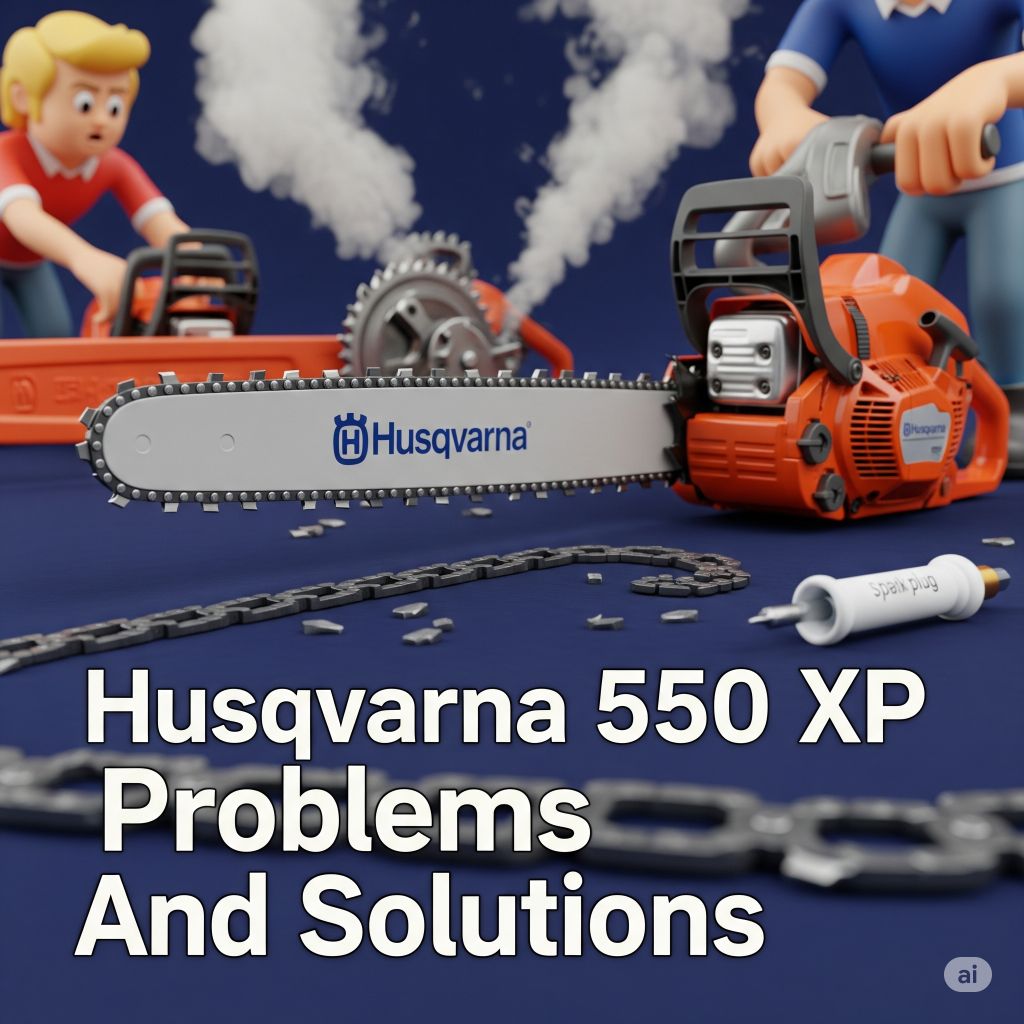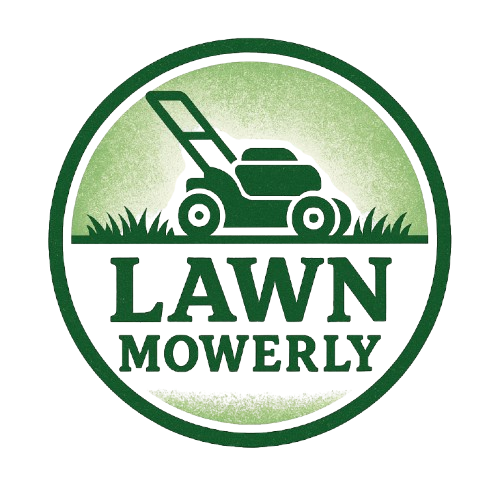
The Husqvarna 550 XP (and its Mark II successor) is a highly regarded professional chainsaw designed for demanding tasks like felling, limbing, and bucking in various forestry and arboreal applications. Its powerful engine, advanced features (like AutoTune), and robust construction make it a favorite among experienced users. However, even top-tier professional equipment can encounter issues. Understanding these common problems and their solutions is key to maintaining your 550 XP’s performance and longevity.
1. Starting Problems (Hard to Start or Won’t Start)
Symptoms:
- Engine cranks but doesn’t fire up.
- Takes many pulls to start.
- Engine only sputters or briefly runs, then dies.
Common Causes and Solutions:
- Stale or Incorrect Fuel Mix:
- Problem: Ethanol in gasoline can degrade fuel quickly, gumming up the carburetor. Incorrect fuel/oil mix (too much oil, too little oil, or wrong type of oil) is detrimental to 2-stroke engines.
- Solution: Drain old fuel completely. Refill with fresh, high-octane (preferably ethanol-free) gasoline mixed with Husqvarna XP 2-stroke oil (or equivalent high-quality synthetic 2-stroke oil) at the correct 50:1 ratio. Use a fresh mix, ideally no older than 30-60 days.
- Clogged Fuel Filter:
- Problem: Debris in the fuel tank can clog the filter, restricting fuel flow.
- Solution: Remove the fuel line from the carburetor and check for fuel flow. If poor, replace the fuel filter (located inside the fuel tank, attached to the fuel line).
- Fouled or Worn Spark Plug:
- Problem: A dirty, carbon-fouled, or worn spark plug won’t produce a strong enough spark.
- Solution: Remove and inspect the spark plug. Clean with a wire brush or replace if necessary. Ensure the spark plug gap is correct (refer to your manual).
- Clogged Air Filter:
- Problem: A dirty air filter restricts airflow, leading to a rich fuel mixture and starting difficulties.
- Solution: Remove and clean the air filter. If it’s heavily soiled or damaged, replace it. Regular cleaning is crucial.
- Flooded Engine:
- Problem: Too many priming pumps or excessive choke pulls can flood the engine.
- Solution: Remove the spark plug, turn the saw upside down, and pull the starter cord several times to clear excess fuel. Clean and dry the spark plug. Reinstall. Pull start without choke and at full throttle (if applicable) until it fires.
- AutoTune Malfunction (more complex):
- Problem: While rare, a severe internal AutoTune sensor or component issue could prevent proper starting. This usually requires professional diagnosis.
- Solution: Ensure all basic checks are done first. If the problem persists, take it to an authorized Husqvarna dealer.
2. Loss of Power / Runs Rough / Stalls
Symptoms:
- Saw bogs down under load, even in properly sized wood.
- Engine idles erratically or won’t hold an idle.
- Stalls when throttle is released or after cutting.
- Excessive smoke from exhaust.
Common Causes and Solutions:
- Clogged Air Filter: (See starting problems above) Restricts air, causes rich mixture and power loss.
- Solution: Clean or replace the air filter.
- Clogged Fuel Filter: (See starting problems above) Restricts fuel, causing lean running and power loss.
- Solution: Replace the fuel filter.
- Dirty Carburetor / Fuel Lines:
- Problem: Gum/varnish deposits can clog tiny passages, affecting fuel delivery.
- Solution: Fuel system flush, or a carburetor cleaning/rebuild kit might be necessary. Using ethanol-free fuel and fuel stabilizer can prevent this.
- Clogged Spark Arrestor Screen:
- Problem: Carbon buildup in the muffler’s spark arrestor screen restricts exhaust flow, leading to power loss and overheating.
- Solution: Remove the muffler and carefully clean the spark arrestor screen with a wire brush. Replace if heavily caked.
- Incorrect Chain Tension or Dull Chain:
- Problem: An overly tight chain or a dull chain puts excessive drag on the engine, causing it to bog down.
- Solution: Ensure chain tension is correct (snug but moves freely). Sharpen or replace the chain.
- AutoTune Recalibration/Malfunction:
- Problem: The AutoTune system continuously adapts to conditions. If the saw has experienced significant altitude/temperature changes or has persistent fuel quality issues, AutoTune might struggle to adapt optimally.
- Solution: Sometimes running the saw at full throttle in clear air for a minute can help AutoTune recalibrate. If issues persist, a dealer can reset/diagnose AutoTune.
- Damaged Piston/Cylinder (Serious):
- Problem: Caused by running too lean, incorrect fuel mix, or chronic overheating. Results in significant power loss, poor compression, and often a metallic rattling sound.
- Solution: Requires professional diagnosis and usually extensive engine repair or replacement.
3. Chain/Bar Issues (Cutting Problems)
Symptoms:
- Chain not cutting straight or pulls to one side.
- Saw vibrating excessively during cutting.
- Excessive smoke from chain/bar interface.
- Chain not moving or spinning slowly.
Common Causes and Solutions:
- Dull or Incorrectly Sharpened Chain:
- Problem: The most common reason for poor cutting. A dull chain tears wood; unevenly sharpened cutters cause pulling.
- Solution: Sharpen the chain regularly using the correct file size and angle (e.g., 4.5mm round file for 3/8″ mini chain, 25-30 degree cutting angle). Pay attention to depth gauges. Replace if cutters are too short or damaged.
- Incorrect Chain Tension:
- Problem: Chain too loose (can jump off) or too tight (causes rapid wear to bar and chain, power loss, and overheating).
- Solution: Adjust chain tension (should be snug on the bar, but you can still pull it around by hand). Refer to your manual for precise tensioning instructions.
- Worn Guide Bar:
- Problem: Grooves (rails) on the guide bar can widen or wear unevenly, causing the chain to wobble, cut crooked, or bind.
- Solution: Check the guide bar rails for wear using a straight edge. Flip the bar periodically for even wear. Clean the guide bar groove and oil holes. Replace worn bars.
- Insufficient Bar Oil:
- Problem: Lack of lubrication causes excessive friction, heat, smoke, and rapid wear to the chain and bar.
- Solution: Ensure the bar oil tank is full of quality bar and chain oil. Check if the oil pump is working (run saw, point bar tip at a light-colored surface – oil should fling off). Clean the oil port on the bar.
4. Excessive Vibration
Symptoms:
- Abnormal shaking or vibration, especially felt through the handles.
Common Causes and Solutions:
- Loose Components:
- Problem: Screws on covers, handles, or engine mounts can loosen over time due to vibration.
- Solution: Inspect and tighten all visible fasteners.
- Damaged Anti-Vibration Mounts:
- Problem: The rubber anti-vibration mounts (buffers) are wear items and can harden, crack, or tear, leading to increased vibration transfer to the user.
- Solution: Inspect the rubber mounts. Replace any that are damaged or significantly degraded.
- Bent Guide Bar or Damaged Chain:
- Problem: A bent guide bar or a chain with damaged/missing cutters can cause imbalance and vibration.
- Solution: Inspect the guide bar for straightness. Check the chain for damage and replace if necessary.
- Worn Clutch Drum/Bearing:
- Problem: A worn clutch drum or its needle bearing can cause vibration and noise, especially at idle.
- Solution: Inspect clutch drum and bearing for wear. Replace as needed.
5. Oil Leaks (Bar Oil)
Symptoms:
- Puddle of oil under the saw when stored.
- Excessive oil residue on the casing.
Common Causes and Solutions:
- Normal “Seepage”:
- Problem: Some bar oil seepage is common, especially after use, as residual oil drains from the pump and bar.
- Solution: Always store the saw on a non-absorbent surface or on cardboard. This is a common characteristic of many chainsaws.
- Loose Oil Cap:
- Problem: Oil can leak from a loose or cracked oil tank cap.
- Solution: Ensure the oil cap is tightened securely and not damaged.
- Damaged Oil Lines/Pump Seals:
- Problem: Worn or cracked oil lines, or failing oil pump seals.
- Solution: Inspect oil lines and pump area for visible leaks. This usually requires professional service to repair the oil pump or replace internal lines.
Preventive Maintenance Tips
- Use ONLY fresh, high-quality, ethanol-free fuel mix: This is the absolute most critical factor for 2-stroke engine health.
- Regularly clean air filter: Daily in dusty conditions.
- Keep chains sharp: Sharpen frequently for efficiency and safety.
- Check chain tension: Before each use.
- Clean guide bar: Clear groove and oil holes. Flip the bar regularly for even wear.
- Clean spark arrestor: Periodically, especially if saw feels sluggish.
- Store Properly: Drain fuel if storing for more than a month. Clean saw thoroughly before storage.
Here are the detailed specifications for the Husqvarna 550 XP (and the very similar 550 XP Mark II), a highly regarded professional-grade chainsaw designed for demanding forestry and tree care work.
Husqvarna 550 XP / 550 XP Mark II: Specifications
| Specification Category | Feature | Details |
|---|---|---|
| Engine | Type | 2-stroke, X-Torq® gasoline engine |
| Displacement | 50.1 cc (3.06 cu. in.) | |
| Power Output | 3.7 hp (2.8 kW) | |
| Max Recommended Engine Speed | 10,200 RPM (Power output at 9,900 RPM) | |
| Idle Speed | 2,800 RPM | |
| Fuel Tank Volume | 16.9 fl oz (0.50 L) | |
| Fuel Mix Ratio | 50:1 (Gasoline:Husqvarna XP 2-stroke oil or equivalent) | |
| Cutting Equipment | Recommended Bar Lengths | 13″ – 20″ (33 – 50 cm) |
| Chain Pitch | .325″ | |
| Chain Gauge | .050″ (1.3 mm) | |
| Oil Pump Type | Automatic, adjustable flow | |
| Oil Tank Volume | 10.8 fl oz (0.32 L) | |
| Dimensions & Weight | Weight (powerhead only) | 11.7 lbs (5.3 kg) |
| Features & Technology | AutoTune™ | Automatic engine tuning for optimal performance across conditions |
| X-Torq® Engine | Delivers lower fuel consumption and reduced exhaust emissions | |
| LowVib® | Effective anti-vibration dampeners absorb vibration, saving the user’s arms and hands | |
| Air Injection™ | Centrifugal air cleaning system for reduced wear and longer operating time between filter cleanings | |
| Adjustable Oil Pump | Allows you to set the chain lubrication rate to your needs | |
| Smart Start® | Designed for easy starting with minimal effort | |
| Quick-release Air Filter Cover | For easy access for cleaning and changing | |
| Magnesium Crankcase | Sturdily built for demanding professional use | |
| Side-mounted Chain Tensioner | For quick and convenient chain adjustment | |
| Felling Sights | Distinct felling marks for better felling precision |
Note: The 550 XP Mark II is an updated version that often features improved cooling, a more robust clutch cover, and slightly refined ergonomics compared to the original 550 XP, while maintaining very similar core performance specifications.
Conclusion
The Husqvarna 550 XP is a professional-grade workhorse. While highly capable, its advanced AutoTune system means some carburetor issues that would be user-adjustable on older saws may now require a dealer. Most common problems, however, are related to fuel quality, air/fuel filtration, or basic bar/chain maintenance. By adhering to a strict maintenance schedule and using high-quality consumables, you can ensure your 550 XP operates reliably and efficiently for years, tackling demanding tasks with ease. For persistent issues, especially those potentially related to AutoTune or internal engine components, consult an authorized Husqvarna dealer.

I’m David man behind Lawn Mowerly; I’ve been dealing with lawnmowers and Tractors with my father since I was a kid. I know every make and model and what each one is capable of and love helping people find the perfect equipment for their needs.
